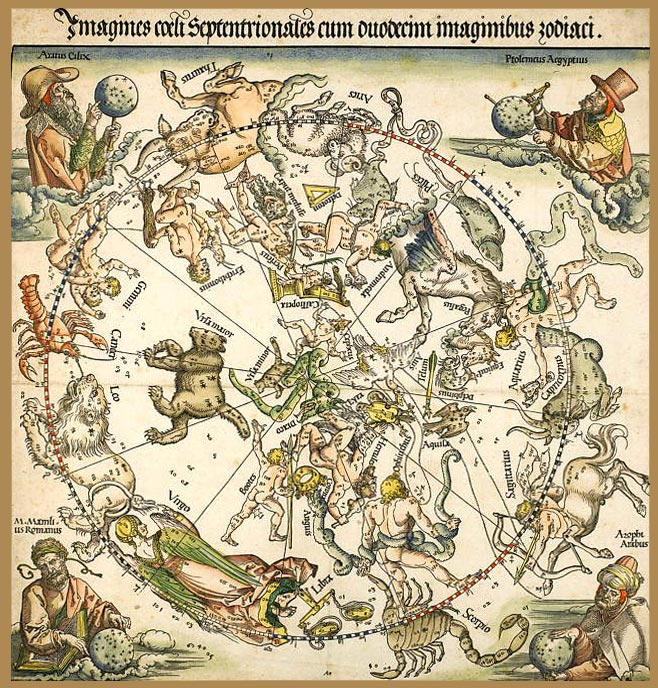Albrecht Dürer
Albrecht Dürer (1471 – 1528) was a German painter, engraver, printmaker, and theorist from Nuremberg. His high-quality woodcuts (nowadays often called Meisterstiche or "master prints") established his reputation and influence across Europe when he was still in his twenties, and he has been conventionally regarded as the greatest artist of the Northern Renaissance (The Northern Renaissance was the Renaissance that occurred in the European countries north of the Alps. Before 1497 Italian Renaissance humanism had little influence outside Italy. From the late 15th century the ideas spread around Europe). His vast body of work includes altarpieces, religious works, numerous portraits and self-portraits, and copper engravings.
The Ancient Greeks called Triangulum Deltoton, as the constellation resembled an upper-case Greek letter delta (Δ). It was transliterated by Roman writers, then later Latinised as Deltotum. Eratosthenes linked it with the Nile Delta, while the Roman writer Hyginus associated it with the triangular island of Sicily, formerly known as Trinacria due to its shape. It was also called Sicilia, because the Romans believed Ceres, patron goddess of Sicily, begged Jupiter to place the island in the heavens. Greek astronomers such as Hipparchos and Ptolemy called it Trigonon (Τρίγωνον), and later, it was Romanized as Trigonum. Other names referring to its shape include Tricuspis and Triquetrum.
Later, the 17th-century German celestial cartographer Johann Bayer called the constellation Triplicitas and Orbis terrarum tripertitus, for the three regions Europe, Asia, and Africa. Triangulus Septentrionalis was a name used to distinguish it from Triangulum Australe, the Southern Triangle. Polish astronomer Johannes Hevelius excised three faint stars to form the new constellation of Triangulum Minus in his 1690 Firmamentum Sobiescianum, renaming the original as Triangulum Majus.
The woodcuts, such as the Apocalypse series (1498), retain a more Gothic flavour than the rest of his work. His well-known prints include the Knight, Death, and the Devil (1513), Saint Jerome in his Study (1514) and Melencolia I (1514), which has been the subject of extensive analysis and interpretation. His watercolours also mark him as one of the first European landscape artists, while his ambitious woodcuts revolutionized the potential of that medium.
Wikipedia



